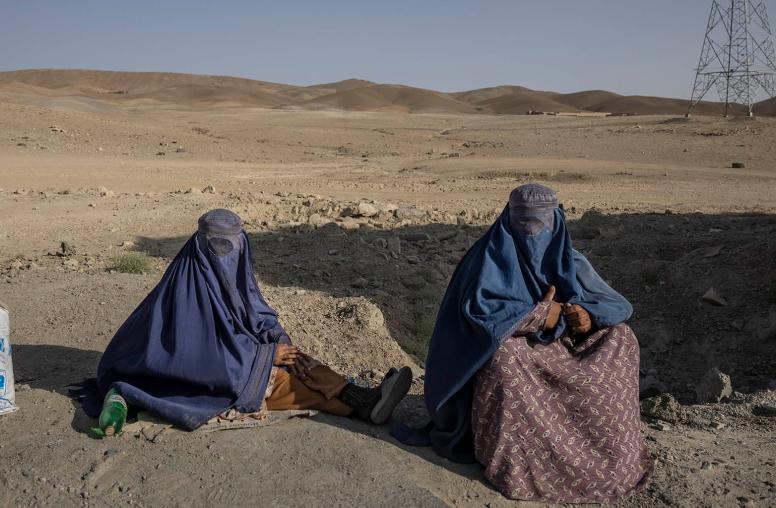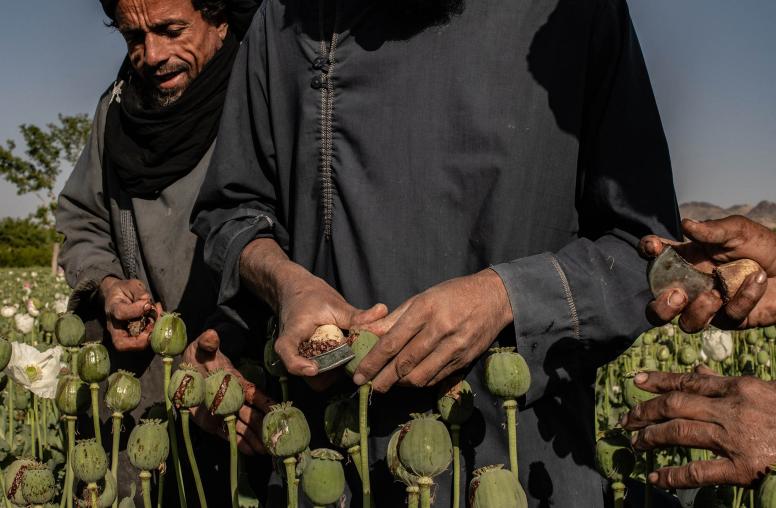The State of Play in U.S.-Taliban Talks and the Afghan Peace Process
The talks are progressing, but will Afghans negotiate with each other?
The latest round of U.S.-Taliban talks concluded on March 12, with both sides noting progress but conceding that no breakthroughs had been made. After two weeks of discussions in Doha, Qatar, American officials said they were close to reaching a final agreement on a potential U.S. troop withdrawal and a Taliban pledge to no longer allow terrorist attacks from Afghanistan. But how far can these talks go without the Afghan government involved? Is Afghanistan’s post-2001 progress in jeopardy? And what do regional actors think about the talks? USIP’s Johnny Walsh examines the state of play in the Afghan peace process.

Where do the talks stand?
The U.S. and Taliban both acknowledge significant progress in their most recent round of discussions. These talks have focused narrowly on two issues: a timetable for a potential withdrawal of U.S. troops from Afghanistan, and steps the Taliban must take to prevent international terrorists from operating on Afghan soil. U.S. Special Representative for Afghanistan Reconciliation Zalmay Khalilzad has said agreement is close on both issues, though neither side has publicized the terms.
The U.S. position is that there are two other vital issues to negotiate: a cease-fire, and an intra-Afghan political settlement. In Khalilzad’s words, “nothing is agreed until everything is agreed”—agreements on all four issues would eventually comprise a single interrelated deal, and the U.S. would not withdraw its troops until that time.
An intra-Afghan negotiation would be necessary to negotiate these latter two issues, and it has yet to begin. It appeared to inch closer over the weekend, however, when President Ghani and other top Afghan leaders—including many of Ghani’s political rivals—agreed on a diverse negotiating team and a council of senior leaders to guide the team’s work. This reflected in part Khalilzad’s intensive diplomacy during a visit to Kabul last week and helped address a perception that Ghani would only agree to talks if he could tightly control them.
Why do the U.S.-Taliban talks exclude the Afghan government?
The Taliban have long refused to enter negotiations with their fellow Afghans before reaching an understanding with the U.S. on when foreign troops will leave Afghanistan. Washington’s primary objective in essentially every Afghan peace initiative this decade has nonetheless been for the Taliban to agree to meet with the Afghan government. After years of Taliban refusal to budge on this point, Washington determined that the choice was between an imperfect peace process that starts with U.S-Taliban talks or no peace process at all.
American officials continue to insist, however, that no final deal is possible without an intra-Afghan dialogue. The most pressing question—and a key focus of U.S. diplomacy—is what form it should take. A clear next step is a gathering of Afghan government, Taliban, and Afghan leaders scheduled for next week in Doha, Qatar; though an “informal” meeting, it could plausibly help launch more serious negotiations. Ghani also plans a Loya Jirga—a traditional nationwide assembly—at the end of April, which would aim to establish national negotiating positions and “red lines” for peace talks with the Taliban.
Any format for intra-Afghan dialogue will need to navigate the dilemma of the elected government’s role: Ghani naturally prefers that his government largely control the process, opposition parties welcome government participation but not control, and the Taliban reject the government’s very legitimacy.
Also looming over the entire effort is the approach of Afghanistan’s “fighting season,” the period of spring and summer when violence is typically highest. The coming six months will carry a heightened risk of battlefield developments—for example, large-scale attacks in Kabul—that can make political compromise more difficult. Worse yet, if the fighting season goes badly for the government, and/or if the U.S. were to announce an intent to withdraw troops with or without an intra-Afghan deal, it will tempt the Taliban to double down on a military campaign to subdue the entire country and obviate the need for a peace process at all.
Are women’s rights, and Afghanistan’s other gains, in danger?
Negotiations have not yet turned to this question. The current U.S.-Taliban talks focus strictly on the issues of terrorism and the troop presence; the U.S. has been unwilling to negotiate internal political and social questions without the Afghan government and other Afghans in the room.
This has not prevented widespread expressions of fear across Afghanistan that the U.S. is willing to trade away the country’s post-2001 gains in its urgency to get out of Afghanistan—or that Afghan leaders will eventually do so. These fears are reasonable, but if intra-Afghan discussions do turn to basic rights (especially for women) and democratic institutions, there is some cause for hope:
- First, Afghanistan under any scenario will remain dependent on international assistance, which even the Taliban say they want to continue. An Afghanistan that trades away democracy and basic freedoms—especially for women—is not one that the vital donors in the U.S. and Europe will bankroll.
- Second, the Taliban appear somewhat more flexible on these issues than they were as a regime in the 1990s. Though still deeply conservative, they now acknowledge women’s rights to work, own property, and be educated, among other things. In the context of a negotiation, they may concede more.
- Third, Ghani and others consistently cite Afghanistan’s democratic system and the rights of women and ethnic minorities atop their list of non-negotiable issues, arguably putting themselves more on the hook than the political moment strictly demands.
At a USIP appearance in February, Khalilzad said that the U.S. would be forceful in standing up for and promoting its values in talks with the Taliban: “We will speak loudly and clearly for the values that we have—the values of human rights, values of freedom of the press [and] women’s right.”
A successful peace agreement will involve painful trade-offs by all sides, and there are no guarantees about what positions any side will take, but these factors create space to protect Afghanistan’s most important gains on women’s rights and democracy.
How is the region—Pakistan, Russia, China, Iran, among others—reacting to the talks?
For years, these countries have doubted that Washington and Kabul could achieve either peace or victory in Afghanistan. They have moreover harbored varying degrees of suspicion that the U.S. even genuinely sought peace, and/or that the U.S. instead sought a permanent presence in Afghanistan intended to contain them—even as they feared a hasty U.S. withdrawal creating chaos in their collective backyard.
These fears led to a variety of hedging behaviors, from Iran’s and Russia’s closer ties to the Taliban, to Pakistan’s refusal to close Taliban safe havens, to China’s reticence to confront Pakistan about this behavior. The net result was an increasingly divided region, mistrustful of both Washington and Kabul. Washington’s posture toward Iran, including this week’s designation of Iran’s Islamic Revolutionary Guards Corps as a terrorist organization, could further complicate Iran’s support for any peace deal.
The Doha talks have momentarily interrupted this deterioration, for at least three reasons. First, Washington’s desire to ultimately get out of Afghanistan has never been more clear, and the talks demonstrate that it prefers not to leave chaos in its wake. Second, each country in question does desire roughly the same outcome as Washington and Kabul: an agreement that ends the Afghan war, and gives the Taliban some (but not all) power. Third, the U.S. and Taliban have both demonstrated relative seriousness about the current talks, leading the region to perceive that there may never be a better opportunity to achieve peace. Pakistan’s helpful release of senior Taliban leader Mullah Baradar at Khalilzad’s request, and Moscow’s hosting of a constructive intra-Afghan dialogue, attest to this positive (if momentary) shift in regional dynamics.
At root, though, nearly all key decisions in this peace process will be made by Afghans. While outside powers can nudge along a deal, or spoil one, none have enough influence over their Afghan partners to force a deal that the government, Taliban, and other Afghans do not want.



